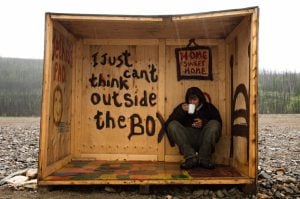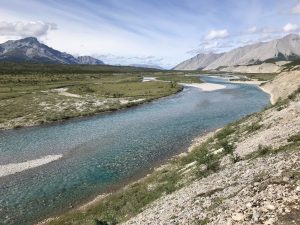Map: Steven Fick/Canadian Geographic
That potential mining bonanza — and worries that blocking development would “bankrupt” the territory with lawsuits by mining companies — inspired the governing Yukon Party to ignore the commission’s recommendation. In 2012, it released its own vision for the Peel’s future: mining would be allowed in 71 per cent of the region and just 29 per cent would be protected.
In response, “Everybody went nuts,” Loeks says. The Yukon Party, long the party of industry in the Yukon (and long dismissive of Indigenous rights), plummeted in popularity; it was eventually voted out of power in 2016. In the meantime, Yukon First Nations took matters into their own hands. In 2014, the Nacho Nayuk Dun and Tr’ondek Hwech’in nations joined forces with the Canadian Parks and Wilderness Society and the Yukon Conservation Society and sued the government. Their lawyer was none other than Thomas Berger, whose work in the 1970s on resource development in the North helped create the modern treaties that now govern the Yukon, as well as the Northwest Territories and Nunavut.
Berger maintained that the territorial government’s proposal was unilateral and violated the UFA. Canada’s highest court agrees.
Yukon Premier Sandy Silver told the CBC this month that his government is “keen to start working towards finalizing a regional land use plan [for the Peel] that now reflects a shared vision.” Meanwhile, Tr’ondek Hwech’in Chief Robert Joseph told the CBC the Supreme Court’s decision is “a victory for democracy, Yukon First Nations and Yukoners.”
Many First Nations chiefs in the Yukon insist there is no inherent conflict between mining interests and Indigenous land claims — as long as the process spelled out in the UFA is followed. And with $120 million in mineral exploration in 2017, mining companies are not about to abandon the territory.
But Loeks says the mining industry must take pains to earn the public’s trust. Yukoners don’t want another disaster like the Faro mine, which has been closed for two decades and will take another decade at least to reclaim at a cost of half a billion dollars.
For Loeks, the Supreme Court decision is hopeful evidence that Canada and its provinces and territories will uphold the principles of co-management spelled out in modern treaties — to the long-term benefit of people and planet. “The mining that proceeds will be done at a higher environmental standard,” he says. “The kind of thinking that gave us the mine at Faro, hopefully that won’t be repeated.”
Tim Querengesser is a writer based in Edmonton. He holds a masters degree in Canadian Studies and Indigenous Studies and has worked as a reporter in the Yukon and Northwest Territories.
Related:






